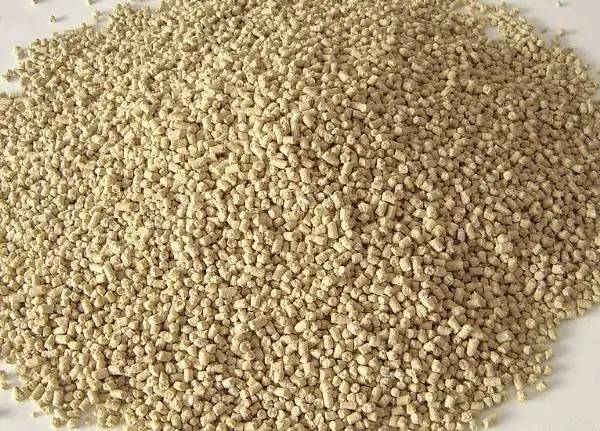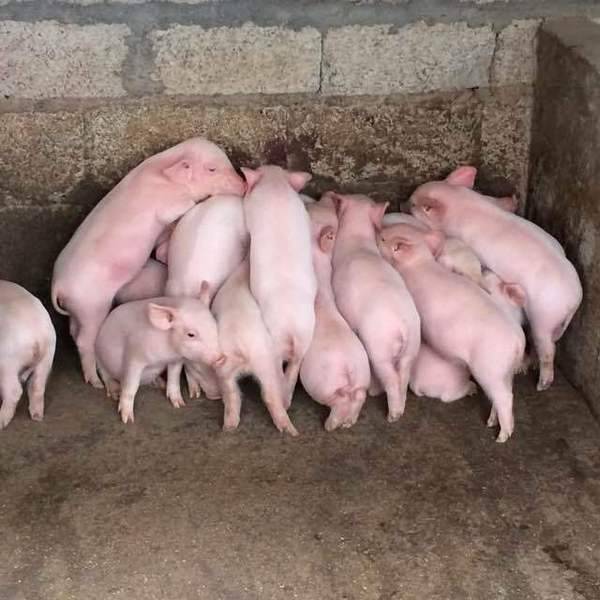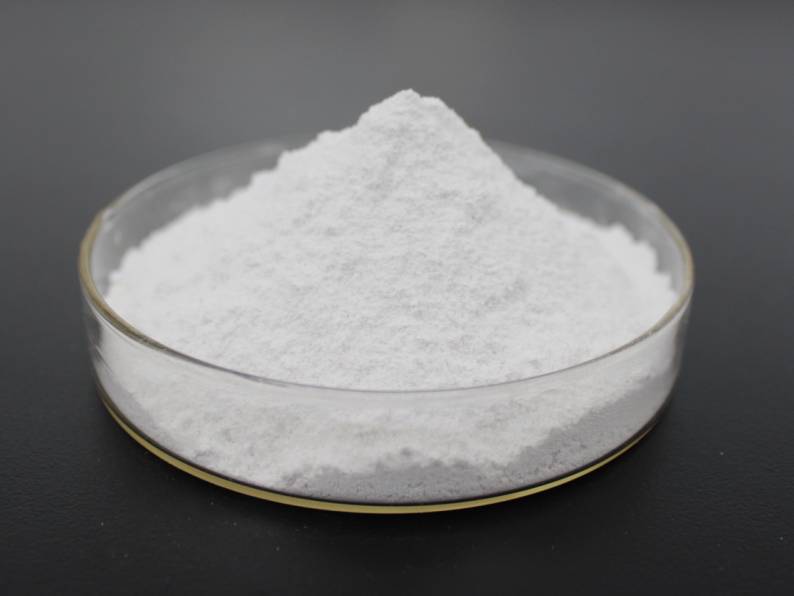Isomaltooligosaccharide Raw Material Facilitates Innovation in Antibiotic-Free Feed Formulations
Green Spring Technology proudly introduces its new feed-grade Isomaltooligosaccharide (IMO) ingredient, offering a natural, stable and highly effective prebiotic solution for gut health in young animals and antibiotic-free formulations.
Crafted from carefully selected natural ingredients through green biotechnology, this product withstands gastric acid and digestive enzymes to deliver potent effects in the animal's hindgut. Isomaltooligosaccharide selectively promotes the proliferation of beneficial bacteria such as Bifidobacterium and Lactobacillus, optimises gut microbiota composition, and supports intestinal barrier function. This significantly enhances gut health in animals including weaned piglets and broiler chickens.
Multiple trials demonstrate that Green Spring's IMO powder stabilises feed formulation efficacy, enhances feed utilisation, and supports optimal animal production performance. It simultaneously meets market demands for safe, compliant feed ingredients within the ‘antibiotic reduction/elimination’ trend. This product offers excellent formulation compatibility and ease of application, making it an ideal functional ingredient choice for developing next-generation healthy feed formulations.
Green Spring Technology remains committed to providing clients with probiotic products of uniform standards and reliable quality, collaborating with the industry to advance the green and healthy development of animal nutrition.
Isomaltooligosaccharides (IMO) are naturally sourced functional oligosaccharides. Owing to their unique structural characteristics and physiological functions, they are increasingly gaining attention as a novel probiotic ingredient within the animal nutrition sector.
Utilising advanced biocatalytic technology, Green Spring Technology efficiently produces Isomaltooligosaccharide from natural starch. Our product maintains stable purity and consistent quality, with Isomaltooligosaccharide content reaching 50%–70%. It exhibits excellent digestive stability, effectively withstanding gastric acid and enzymatic hydrolysis to reach the animal's hindgut for targeted action.
As a safe, stable, and readily formulatable functional ingredient, isomaltulose is widely applicable across various livestock and poultry feed formulations, assisting clients in enhancing product technological sophistication and competitive differentiation. Green Spring Technology remains committed to supplying the industry with premium, reliable IMO raw materials, driving innovation and advancement in healthy, high-efficiency animal nutrition solutions.
1 Isomaltulose Ingredient Overview
As a functional carbohydrate, Isomaltooligosaccharide, owing to its unique glycosidic bond structure, can pass through the anterior digestive tract of animals undigested, reaching the hindgut to exert its effects. Currently, numerous indigestible carbohydrates have been extensively studied and are recognised as having potential to support gut health. As a non-digestible component in feed, the application value of isomaltulose is increasingly gaining industry attention.
1.1 Nutritional Characteristics of Isomaltulose Powder
As a prebiotic ingredient with well-defined functional properties, Isomaltooligosaccharide demonstrates significant application potential in animal nutrition. This component passes intact through the anterior digestive tract, reaching the hindgut to exert its probiotic effects, thereby effectively nourishing beneficial gut microbiota.
Research indicates that supplementing diets for young animals, such as early-weaned piglets, with isomaltulose helps optimise gut microbiota composition and promote microbial balance. Green Spring Technology's Isomaltooligosaccharide powder raw material boasts high purity and excellent stability, making it widely applicable in diverse feed formulations to enhance functional value and market competitiveness for client products.
1.2 Role in Animal Nutrition and Health
The application of Isomaltooligosaccharide in animal health primarily manifests through: promoting proliferation of beneficial microorganisms to support nutrient absorption; assisting in maintaining intestinal microecological balance; reducing the impact of external adverse factors; and exhibiting potential to bolster the body's own defence systems.
Isomaltooligosaccharides assist in maintaining a healthy intestinal environment through multiple mechanisms. Firstly, they establish a competitive advantage for beneficial microbes on the intestinal mucosal surface. Secondly, they improve local environmental conditions by promoting the metabolism of beneficial bacteria. Research indicates that isomaltulose significantly enhances the proliferation of beneficial bacteria such as bifidobacteria and lactobacilli, whose metabolic activities help optimise the intestinal environment. Moreover, beneficial microbial communities inherently possess robust environmental adaptability and colonisation advantages, providing a solid foundation for maintaining gut microbial equilibrium.
1.3 Oligosaccharides and Animal Health Support
Research indicates that Isomaltooligosaccharides positively influence animal physiological states by promoting the proliferation of beneficial microorganisms. As a multifunctional component, oligosaccharides demonstrate considerable application potential when integrated with other nutritional strategies.
Research by Zhang Hongfu et al. (2000) indicated that isomaltulose may participate in regulating animal physiological states. Earlier studies also demonstrated that certain microbial fermentation products help elevate levels of specific immunoglobulins in animal serum. Furthermore, it is proposed that oligosaccharides, as soluble fibre substances, may assist in maintaining animal health by improving the intestinal environment.
1.4 Synergistic Application of Oligosaccharides and Microbial Preparations
In practical applications, the efficacy of live bacterial preparations is readily influenced by the animal's digestive tract environment. Oligosaccharides exert their effects by supporting the balance of indigenous gut microbiota. Possessing multiple physical and physiological properties, they demonstrate good compatibility with live bacterial preparations and other feed components, facilitating their promotion in large-scale farming operations.
Research indicates that combining oligosaccharides with certain microbial preparations can further optimise feeding outcomes. For instance, studies incorporating isomaltulose alongside specific microbial strains in piglet diets demonstrated superior growth trends compared to single-component formulations.
Oligosaccharides hold broad application potential in modern farming systems. Some studies indicate that feeding piglets with inulin products derived from Jerusalem artichokes improves growth performance compared to certain traditional feeding strategies. Further research suggests potential for optimising feed additive dosages. Notably, the efficacy of oligosaccharides in piglets requires optimisation based on specific production conditions.
2 Applications of Isomaltulose Powder in Animal Production
2.1 Effects of Isomaltulose on Animal Growth Performance and Feed Utilisation
ISO Malto Oligosaccharide shares numerous characteristics with non-starch polysaccharides (NSPs) present in various plants and microorganisms (Mul and Perry, 2001).In vitro studies indicate that isomaltulose can be utilised by certain microorganisms possessing specific glycosidic bonds, thereby promoting the proliferation of beneficial microbial populations. Furthermore, it can bind to certain microbial surface substances, supporting their natural expulsion and thus contributing to the maintenance of a stable intestinal environment in animals.
Most feeding trials show inconsistent effects of oligosaccharide supplementation on daily weight gain and feed utilisation efficiency in animals.Boldon (1993) observed in a piglet trial that adding 1–2 g/kg of galacto-oligosaccharides increased weight gain by 6.8% and reduced the feed-to-gain ratio by 1–2%. The same study reported that adding α-glucan oligosaccharides improved daily weight gain by 3–4% and feed conversion efficiency by 3–4% in 35-day-old weaned piglets over a four-week trial period. Conversely, Mathew (1997) added 0.5% galacto-oligosaccharides to the diet of 21-day-old weaned piglets. After a 9-week trial, data indicated significant differences in feed intake compared to the control group, yet no apparent changes were observed in average daily weight gain or feed utilisation rate.

2.2 Effects of Isomaltulose on Gut Health
Optimising microbial community structure within the animal digestive tract aids in maintaining intestinal environmental stability. Isomaltulose promotes proliferation of beneficial bacteria, assists in regulating the colonisation of certain microorganisms, and supports the healthy development of intestinal barrier function and the body's innate defence systems.
Research indicates that appropriate supplementation with oligosaccharides improves gut health in animals. For instance, Bolduan added 0.2% bioactive mannan oligosaccharides to the diet of 35-day-old weaned piglets, demonstrating positive effects on intestinal function. Conversely, oligosaccharides exhibit strong hygroscopic properties; excessive supplementation may disrupt intestinal water balance, necessitating careful dosage control in practical applications.
2.3 Effects of Isomaltulose on Organ Development in Animals
Research by Zhang Hongfu et al. (2000) indicated that isomaltulose had no significant impact on the relative weights of the liver and spleen in animals. However, it slightly reduced the relative weight and length of the small intestine. This change may be related to isomaltulose's selective promotion of intestinal microbiota. Concurrently, the study observed a slight increase in the relative weight of the caecum and large intestine, while their relative lengths remained largely unchanged. This phenomenon may be attributed to the partially utilised isomaltulose in the caecum enhancing chyme water retention and expanding content volume, thereby increasing mucosal surface area and weight to some extent.
2.4 Effects of Isomaltulose on Digestive Tract Microbiota Composition
As a functional oligosaccharide, isomaltulose can be utilised by multiple beneficial microorganisms, aiding in the optimisation of the animal digestive tract's microecological environment. Numerous studies indicate that oligosaccharides possess certain regulatory functions over microbial communities.
Research involving piglets and poultry has revealed that dietary structural adjustments may induce alterations in gut microbiota composition. Scholars including Fukuyasu and Farnworth observed in various animal trials that oligosaccharides aid in maintaining digestive tract microbial equilibrium. Wang Ran, Shao Chunrong et al. (2002) added 1% isomaltulose to broiler diets, revealing lower Escherichia coli counts in jejunal and caecal contents compared to controls, while Lactobacillus counts were higher than in the control group.Zhang Hongfu et al. (2001) similarly noted positive trends in microbial composition within caecal and colonic contents when 0.5% isomaltulose was incorporated into diets for early-weaned piglets.
These studies indicate that isomaltulose, as a dietary component, can participate in regulating the microbial composition of the animal digestive tract, thereby playing a positive role in maintaining intestinal health.
2.5 Effects of Isomaltulose on Intestinal Mucosal Structure
Following weaning, the intestinal mucosal structure of piglets undergoes a series of adaptive changes, including adjustments in epithelial villus morphology and crypt depth (Hampson, 1986; Yan, 1993; Gu et al., 1999). Research indicates a correlation between the composition of gut microbiota and the dynamic changes in mucosal structure (Deplancke & Gaskins, 2001).

In studies adding 0.5% isomaltulose to chick diets, increased villus height in the caecal mucosa was observed alongside a rising trend in caecal weight. These findings suggest ISO Malto Oligosaccharide may indirectly influence intestinal mucosal structure by affecting microbial composition.
3 Recommended Isomaltulose Addition Levels
Research indicates that incorporating 0.5% isomaltulose into diets for weaned piglets and broiler chickens yields favourable outcomes.
As a naturally sourced, stable functional oligosaccharide, isomaltulose holds broad application potential in animal nutrition and health. Green Spring Technology adheres to rigorous production standards, committed to supplying premium isomaltulose raw materials with guaranteed qualities:
· Consistent composition across batches with excellent uniformity (supported by HPLC testing);
· Microbiological and heavy metal indicators compliant with relevant domestic and international standards;
· A fully traceable supply chain system established to guarantee a stable raw material supply.
Request samples and a bespoke quotation now: helen@greenspringbio.com / +86 13649243917.
-
Prev
Isomalto Oligosaccharide: A Novel Natural Ingredient for Animal Nutrition
-
Next
Isomaltooligosaccharide: Empowering Functional Foods for Health and Flavor Enhancement


 English
English French
French Spanish
Spanish Russian
Russian Korean
Korean Japanese
Japanese




